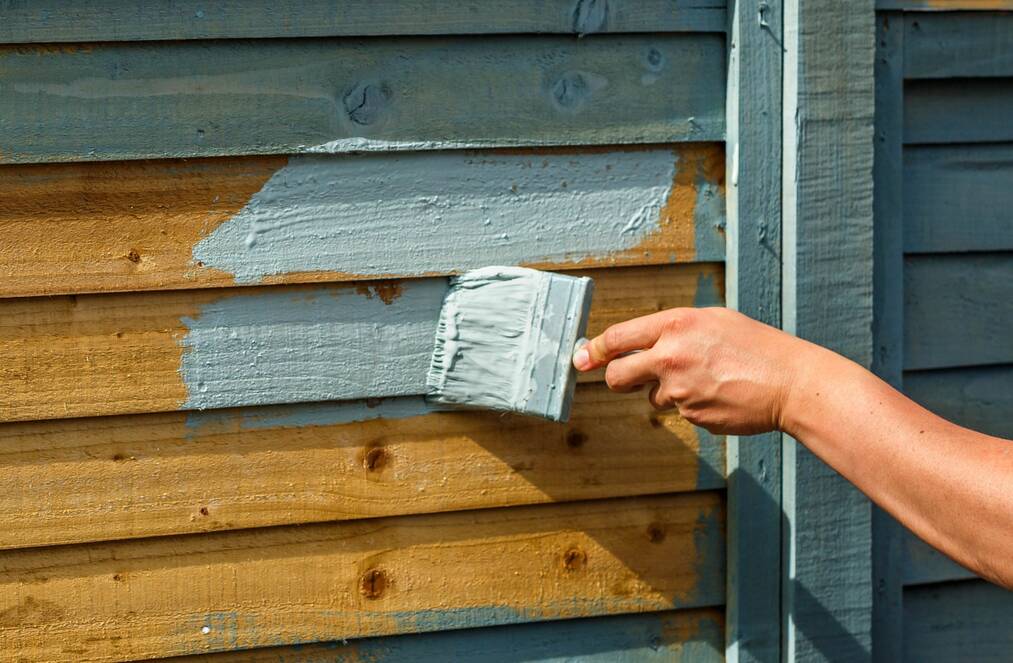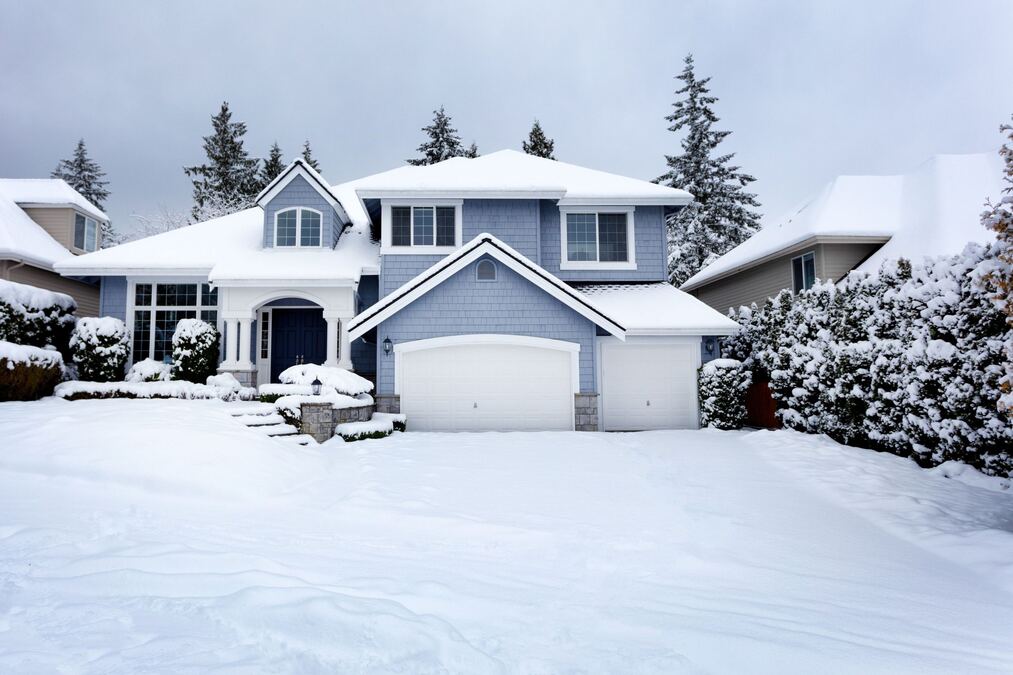Why Wood Trim on Homes in Bloomfield Hills Requires Frequent Repainting

Exterior wood trim adds warmth, detail, and architectural character to homes throughout Bloomfield Hills, but it also comes with a unique set of maintenance responsibilities. While wood is a timeless material, it’s far more vulnerable to Michigan’s ever-changing climate than many homeowners expect.
A common question among local homeowners is how often to repaint exterior wood trim, especially when it seems like the last coat didn’t last as long as promised. The reality is, wood trim requires more frequent upkeep than siding or brick, and the timeline depends on everything from sunlight exposure to the painter’s surface prep.
If you’ve noticed chipping, fading, or discoloration around your windows, fascia, or decorative trim, it may be more than cosmetic. In this post, we’ll break down:
- Why Bloomfield Hills weather accelerates trim paint failure
- What visible signs suggest it’s time to repaint
- Why trim often needs more attention than other exterior surfaces
- What professional painters recommend for a repainting schedule in Michigan’s climate
Understanding how to care for wood trim properly and how often to repaint it can help protect your home’s value, prevent costly wood repairs, and maintain the curb appeal that sets your property apart.
How Michigan’s Weather Impacts Wood Trim Longevity
Bloomfield Hills homeowners are no strangers to dramatic weather shifts, icy winters, humid summers, and unpredictable spring storms, all leave their mark. For wood trim, these conditions create a relentless cycle of expansion, contraction, and moisture exposure that shortens the life of even the highest-quality paint job.
Understanding the lifespan of exterior wood trim paint starts with recognizing how local weather impacts it:
- Freeze-thaw cycles in winter cause painted wood to contract and expand repeatedly, leading to cracks in both the wood and the paint film
- Spring and summer humidity allows moisture to creep into trim that isn’t fully sealed, weakening the bond between the paint and the substrate.
- UV exposure during sunny months breaks down paint pigments, especially on south- and west-facing surfaces.
- Heavy rain can lead to water saturation in poorly caulked or aging trim, encouraging blistering and early failure.
Even well-maintained homes in Bloomfield Hills can experience premature wear if the trim isn’t protected with the right prep, paint, and maintenance schedule. These environmental pressures are a key reason trim often needs repainting more frequently than siding or brick, and why periodic professional evaluations are so valuable.
Common Signs It’s Time to Repaint Wood Trim
Wood trim doesn’t usually fail all at once; it deteriorates in stages. The key to avoiding major restoration work is recognizing the early signs that your trim is due for new paint. In a climate like Bloomfield Hills, even subtle wear can progress quickly, especially on older homes with original woodwork.
Homeowners often wonder if they should paint exterior wood trim, but the real answer lies in watching for these signs:
- Peeling or cracking paint, particularly on horizontal surfaces or sun-exposed sides
- Faded or uneven color, which often signals UV breakdown or moisture intrusion
- Exposed wood grain or bare spots, where the topcoat has completely worn away
- Black streaks, mildew, or water stains, especially around joints or seams
- Warped, soft, or crumbling wood, which suggests moisture has penetrated beneath the paint layer
Once paint starts to lift or expose raw wood, the surface becomes more vulnerable with each passing season. Delaying repainting at this stage can lead to deeper wood damage, structural repair needs, and a much higher cost to restore.
This is why professional painters recommend regular inspections of trim, not just siding, during annual home maintenance. Identifying these issues early allows for touch-ups or full repainting before more invasive repairs are necessary.
Why Trim Fails Faster Than Siding or Other Surfaces
It’s easy to assume that all painted exterior surfaces age at the same rate, but that’s rarely the case. In fact, wood trim typically breaks down faster than siding, stucco, or other cladding materials. This is especially true in Bloomfield Hills homes, where woodwork is often original and highly detailed.
There are a few specific reasons trim demands more frequent attention:
- Trim is more exposed along edges, corners, eaves, and joints, areas where moisture settles, and the sun hits directly
- Decorative trim is often made of softer woods, which are more porous and susceptible to swelling, shrinking, and paint failure.
- Trim takes more impact and handling, whether it’s around doors, windows, or garage frames that are opened and closed daily.
- Surface area is smaller, so peeling or fading is more visible and aesthetically disruptive.
This is why repainting exterior wood trim is rarely the same as how often to repaint your siding. Even if the body of the home still looks good, your trim may be failing quietly, damaging your curb appeal and opening the door (literally) to moisture problems.
A professional painter will assess your trim independently from your siding and may recommend staggered maintenance schedules that focus on the most vulnerable areas first.
What Professionals Recommend for Repainting Frequency
While homeowners often want a clear number, the answer to repainting you exterior wood trim isn’t one-size-fits-all. It depends on a mix of environmental exposure, quality of previous work, and the type of wood used. That’s why professional painters approach it case by case, but with some reliable guidelines.
- Sun and weather exposure – South- and west-facing trim may need repainting closer to the 3-year mark
- Age and type of wood – Older or softer wood deteriorates faster without regular maintenance
- Previous paint job quality – Paints with poor adhesion, skipped primer, or low-quality caulking shorten the repaint cycle
- Presence of shade or foliage – Trim shaded by trees may hold moisture longer and grow mildew faster.
Professional painters extend the life of trim paint by using high-quality primers, sealants, and caulking. More importantly, they understand that proper prep work, not just paint, sets the stage for longevity.
For homeowners wondering whether or not they should repaint exterior trim, the answer is usually: before you see damage, not after. A proactive schedule based on your home’s specific vulnerabilities is more cost-effective than reacting to peeling or rot.
Stay Ahead of Wood Trim Wear with Expert Oversight
Exterior wood trim gives Bloomfield Hills homes timeless charm, but that charm comes with a cost. Unlike other materials, wood responds dramatically to moisture, sunlight, and temperature swings. If left unprotected, it can quickly go from a minor eyesore to a structural liability.
Knowing when to paint exterior trim is about more than watching the calendar. It’s about understanding your home’s exposure, checking for early signs of failure, and investing in expert work that prioritizes both prep and product quality. When those elements come together, repainting becomes proactive, not reactive, and your trim stays beautiful longer.
If it’s been a few years since your last exterior touch-up or you’re starting to notice soft edges, flaking paint, or fading detail, it may be time to get ahead of it. A knowledgeable painter can assess your trim’s condition, recommend a tailored schedule, and help prevent what’s cosmetic today from becoming costly tomorrow.




Leave a Reply